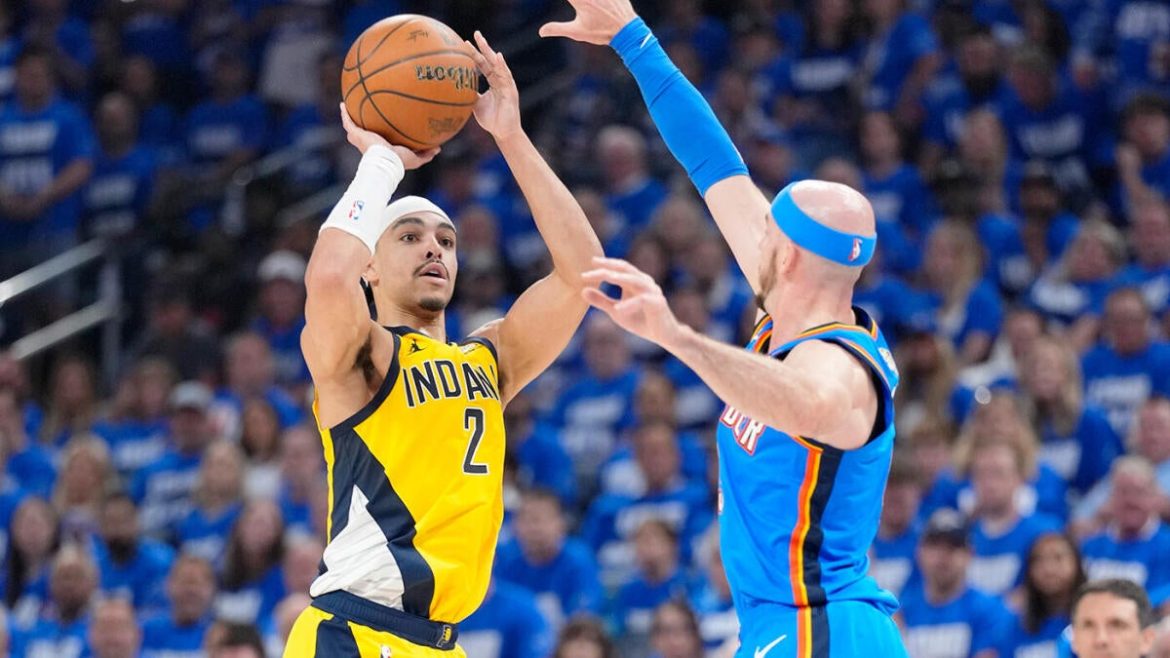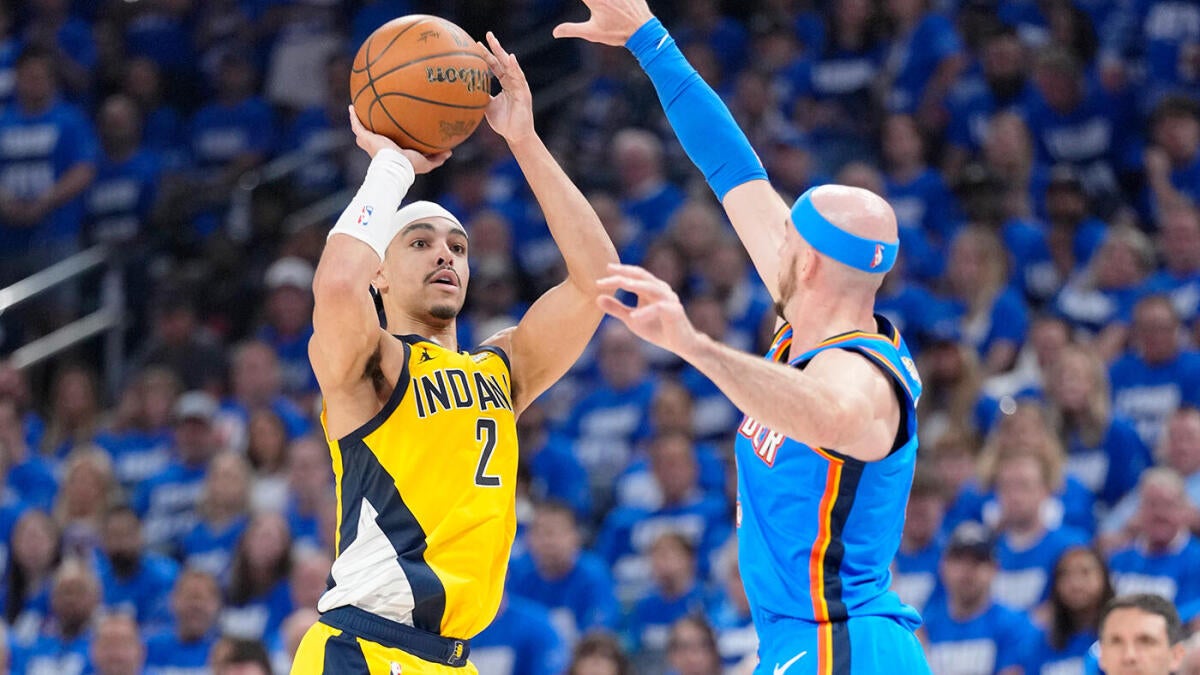The 2025 NBA Finals between the Indiana Pacers and the Oklahoma City Thunder has captivated fans with unexpected drama, strategic depth, and remarkable performances. What was initially perceived as a clash between an underdog Eastern Conference contender and a favored Western Conference powerhouse has evolved into a compelling narrative about resilience, tactical adjustments, and the evolving style of modern basketball. This analysis delves into the factors shaping this memorable series, focusing on game dynamics, key player contributions, team strategies, and broader implications for both franchises.
A Tale of Upsets and Comebacks: The Pacers’ Path
The Pacers have defied expectations throughout the playoffs, exemplified by their resilient comebacks and road victories. Their journey to the finals, marked by an outstanding 10-2 playoff record and six straight road wins, showcases a team that thrives in adversity. In Game 1 of the Finals, Indiana overcame a daunting 15-point deficit in the fourth quarter to stun the Thunder 111-110, a victory sealed by Tyrese Haliburton’s buzzer-beating 21-foot pull-up jumper. This win was not just a feel-good moment but an athletic statement—Indiana had exhibited a relentless never-give-up attitude emblematic of their playoffs run, which included multiple comebacks from seven-plus point deficits in the final minute.
Backing their success is a team shooting prowess that stands out in the series. Indiana has maintained over 40% accuracy from the three-point line throughout the postseason and demonstrated this lethal shooting in the Finals, making 18 triples at a 46.2% clip in Game 1, contrasting with OKC’s underwhelming 39.8% overall shooting. Their aggressive perimeter offense, highlighted by Haliburton’s sharpshooting, capitalizes on Oklahoma City’s allowance of nearly 40 three-point attempts per game, suggesting a strategic focus on exploiting perimeter weaknesses.
Thunder’s Defensive Challenges and Adjustments
The Thunder’s defense, particularly early in the series, has faced significant difficulties containing the Pacers’ offense. Game 1 saw Oklahoma City force 19 turnovers in the first half against a usually careful Pacers team, yet unable to translate that into a commanding lead or secure the win. Oklahoma City’s trapping defense, intended to stifle pace and create turnovers, appeared overmatched as Indiana’s ball movement and shooting efficiency increased. The Thunder’s defensive lapses down the stretch enabled Indiana to find critical scoring opportunities that erased the deficit.
Moreover, defensive missteps in crucial moments—such as allowing open shots for key Pacers players and poor rotations—highlighted cracks under pressure. Oklahoma City’s superstar, Shai Gilgeous-Alexander, while performing with MVP-level skill, found difficulty receiving sufficient support defensively to close out the game, particularly as Indiana’s coach Rick Carlisle adapted by not relying solely on containing SGA but attempting broader team defensive schemes.
The Thunder’s response in Game 2 was notable, as they leveled the series with a 123-107 win. This outcome was propelled by bench contributions, especially from Kenrich Williams, who outscored Indiana significantly during his minutes, offsetting the struggles of Pacers starters. Such adjustments signify Oklahoma City’s urgency in shoring up defensive assignments and balancing offensive load to prevent further comebacks.
Strategic Dimensions: Pace, Perimeter, and Trust
This Finals series epitomizes the modern NBA’s evolution—a fast-paced game with a premium on three-point shooting, switching defenses, and clutch decision-making. Indiana’s desire to push the pace seeks to exploit transition opportunities against a Thunder defense oriented to aggressive half-court traps. Their approach tests Oklahoma City’s ability to sustain disciplined rotations against rapid ball movement.
Coach Rick Carlisle’s trust in his defensive schemes and key players like Drew (a role player noted for his solidity) in pressure situations highlights the importance of execution and trust on the floor. The Pacers are not focusing on solely shutting down Gilgeous-Alexander but employing collective strategies to disrupt the Thunder’s rhythm.
Offensively, Haliburton has emerged as a clutch performer and symbol of the Pacers’ offensive identity. His knack for timely shots and playmaking contrasts with Oklahoma City’s reliance on SGA’s scoring. This duality of star power versus balanced team efficiency is a vital storyline shaping the Finals.
Psychological Edge and Historical Context
Indiana’s repeated ability to overturn large deficits late in games has injected a psychological element into the series. Since 1997, it’s exceptionally rare for teams to mount multiple comebacks of seven or more points in the final minute, making the Pacers’ feats notable examples of mental toughness. This resilience compounds pressure on the Thunder who have witnessed leads erode and confidence waver in clutch moments.
Meanwhile, the series brings attention to the shifting landscapes of NBA powerhouses. Both the Thunder and Pacers operate under smaller-market constraints, yet they epitomize strategic roster construction and player development over luxury-tax-laden juggernauts. Their success serves as proof that balanced, well-coached teams with committed culture can reach basketball’s summit.
The Road Ahead: What to Expect Moving Forward
With the series tied after two games, both teams face critical adjustments. The Pacers must sustain their shooting efficiency and defensive focus to prevent the Thunder from dominating possessions. Oklahoma City needs to maintain bench contributions and shore up late-game defensive vulnerabilities that currently threaten their favorites status.
Key matchups to watch include how effectively the Pacers can keep Gilgeous-Alexander in check without over-committing defenders and the Thunder’s ability to disrupt Indiana’s perimeter rhythm. Depth will play an increasing role, extending beyond stars to role players whose performances may swing momentum in pivotal moments.
Conclusion: A Finals Reflecting Modern NBA Drama
The 2025 NBA Finals stand out as an electrifying series rich in surprises, strategic battles, and memorable individual moments. The Pacers’ underdog grit against the Thunder’s star power creates an enthralling contest emblematic of today’s basketball dynamics. As both teams push forward, this Finals promises a showcase of resilience, tactical creativity, and high-stakes basketball fueled by emerging stars and seasoned coaching acumen.
Whether Indiana can complete what would be a historic upset or Oklahoma City reasserts dominance, the series already serves as a compelling chapter in NBA lore—highlighting how teamwork, shooting range, and mental fortitude can defy expectations on the sport’s grandest stage.





